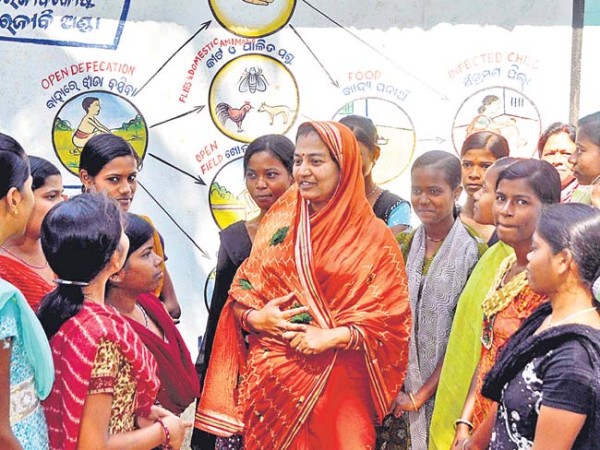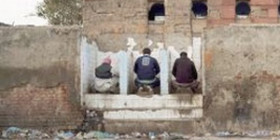You’ve probably heard of Puri, the sea-side resort in Odisha. But have you heard of Sagada, a tiny village in Puri’s Nimapada block? Kabita Nayak (44), strong and gritty, hadn’t heard of Sagada either, until she came to the village as a young bride in 1985. India was taking slow steps towards liberalisation but Sagada stood out for reasons no one would ever want to advertise. Imagine a village, an entire village that did not have a single toilet that even its women could hide behind. Not a make-shift toilet, not even a curtained area with a hole in the ground that could be disguised and used as a private area.
Nayak was appalled when she reached her husband’s home – neither her in-laws’ house nor the entire village had a single toilet. Daughter of a state government employee, habituated to using toilets in government quarters, Nayak felt very uncomfortable going out to attend to the call of nature, though it was a process ‘natural’ to others in the village.
People openly defecated in fields; even the sides of the road leading to the village used to be littered with human excreta. “Being a newly married bride, I covered my face with my saree out of shame while going out for open defecation. It was so humiliating for me that I even ate less to skip my daily routine for days,” said Nayak, who finally convinced her father-in-law to construct the village’s first toilet – a small structure of bricks with a pan in the middle – at the back of their house a year later.
Her own demand fulfilled, Nayak set out to persuade others about the advantage of having a toilet at home and the adverse impact of open defecation, not just on health, but also on one’s dignity.
However, it was also not easy using a toilet since it was still considered taboo by most.
The villagers however realised its utility during the rainy season when the situation became worse with people attending to the call of nature in muddy fields with ankle-deep water amidst snakes and insects.
Few more families added toilets to their homes over the years but many still resisted — a toilet within the house was like a distant dream for the many among the 120-odd families who lived below the poverty line.
Nayak tried hard, even knocking on the doors of government departments but in vain.
Finally in 2011, Nayak — who had lost neither the strength nor her grit — came in contact with United Artists Association (UAA), a voluntary organisation that had partnered with non-governmental organisation Water Aid India for a project to curb open defecation in Puri district. “Nayak had already motivated the women in the village and we were confident that our support would not go waste,” said Simanchal Panda of UAA.
Another local voluntary group, Rural Welfare Institute (RWI) and UAA provided financial aid of R2,200 per toilet to the villagers. The villagers then added their own resources to it and constructed the toilets on their own.
Now there are 116 toilets in the village. Every single house now boasts of its own toilet. It is a remarkable achievement — with 98% of toilet coverage. In stark contrast, the percentage of households that do not own a toilet in Puri district and Odisha stand at 84.4% and 85.9% respectively as per the 2011 census report.
The toilets in Sagada are modest 4×4 feet brick structures, some with just a polythene roof while some simply have bamboo curtains for doors. Nayak proudly said that each and every household, irrespective of their economic condition, contributed towards constructing their household latrines.
The toilets have brought about a quantum change in the quality of life in the village and its environment. The roads, pathways and water bodies are visibly clean.
Sasmita Pradhan (20), a member of Kumari Club, a body formed by young girls to ensure sanitation in the village, said, “The toilets have also added to the greenery of the village. The drainage water from the toilets have provided much required nutrients to hundreds of new fruit-bearing trees, especially banana trees, that have been grown near each of them.”
A contented Nayak says, “The process of making people aware of how unhygienic open defecation is was one battle. Tying toilets in with dignity for the community was another. Today, the toilet has become a symbol for the entire village.”
A satisfied Nayak truly has reasons to celebrate. She has liberated an entire village and stands out as a leader in a small rural swathe that may otherwise have gone unnoticed.





Leave a reply